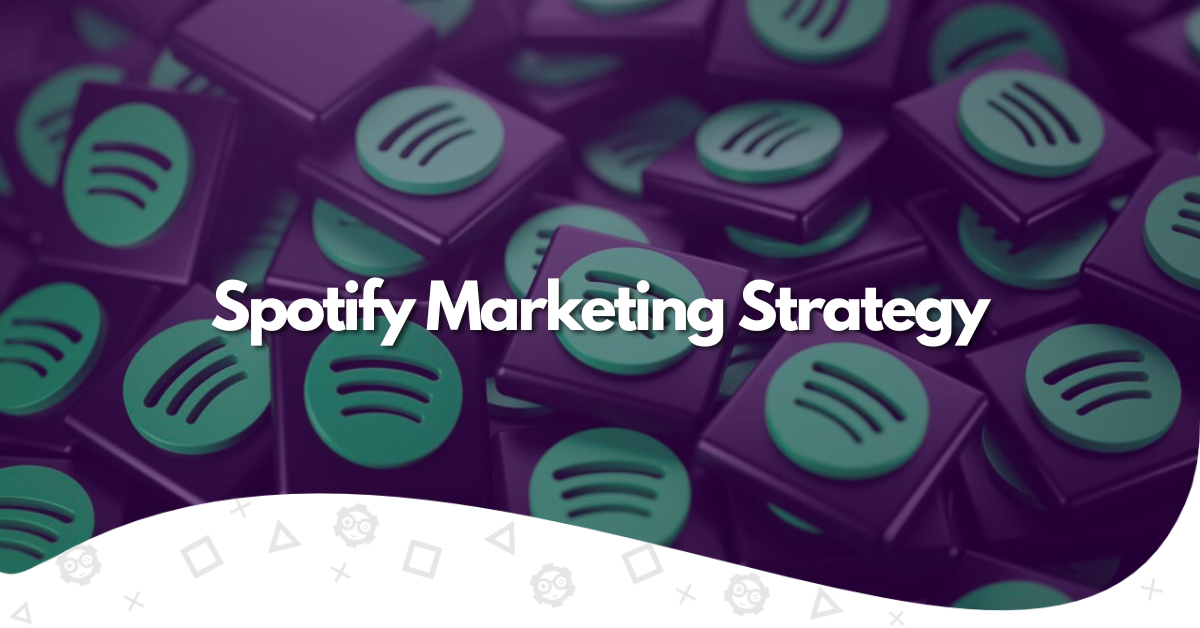Since 2008, Spotify has been changing the world of music and communication via streaming with its freemium business model. Thanks to its marketing campaigns, Spotify has become an industry leader, with more than 30% of listeners currently using its audio application, podcasts, and other services.
Most experts believe that Spotify has mastered marketing campaigns—online and offline—to attract customers from all spectrums, demographic groups, and countries around the world. But what exactly did Spotify do to achieve such popularity and become the most important online audio streaming platform?
We will answer this question in the following lines.
What Is Spotify?
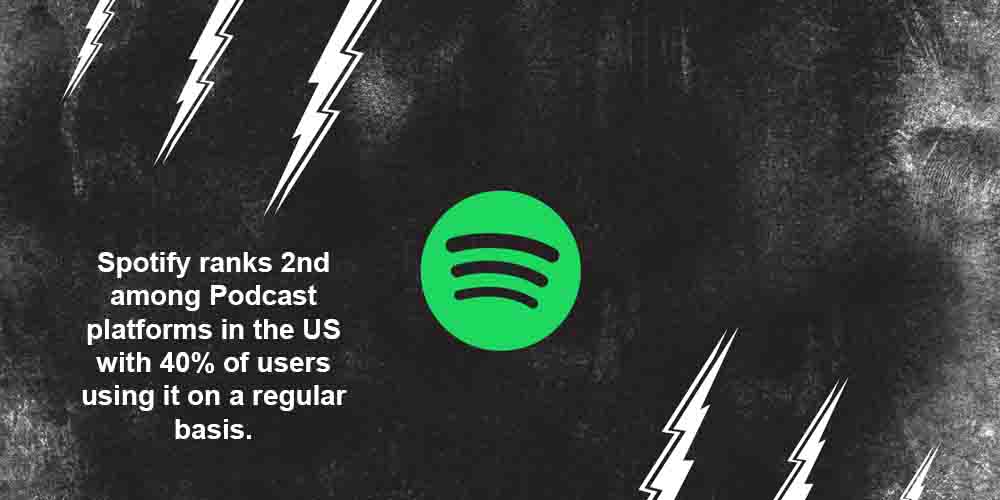
Source: Insights.vaizle.
Spotify is one of the most important social listening tools of the digital age currently available online, with over 615 million users worldwide and a presence in more than 180 markets.
Spotify has facilitated access to music to millions of listeners who can create unique playlists and even share them through the same platform and other social media platforms.
What Is Spotify’s Marketing Strategy Based On?
Spotify’s marketing strategy is characterized by an excellent blend of different marketing approaches. In the subsequent lines, we showcase the main ones.
Social Media Marketing
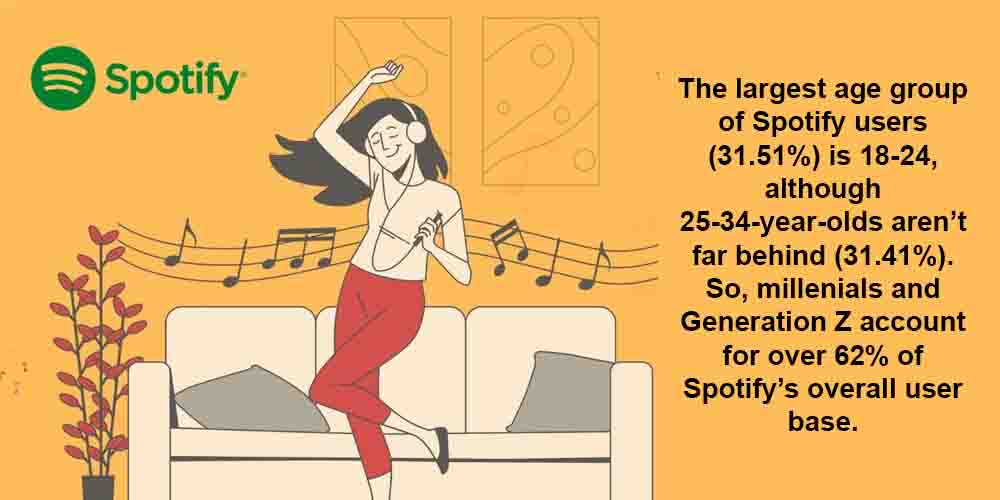
Source: Tchreport.
Spotify posts frequently on social media. With 55% of its users in the 18 to 34 age demographic, it’s no surprise Spotify actively posts on multiple social media platforms. Here’s a rundown of their social media accounts:
- Instagram: 11.4 million
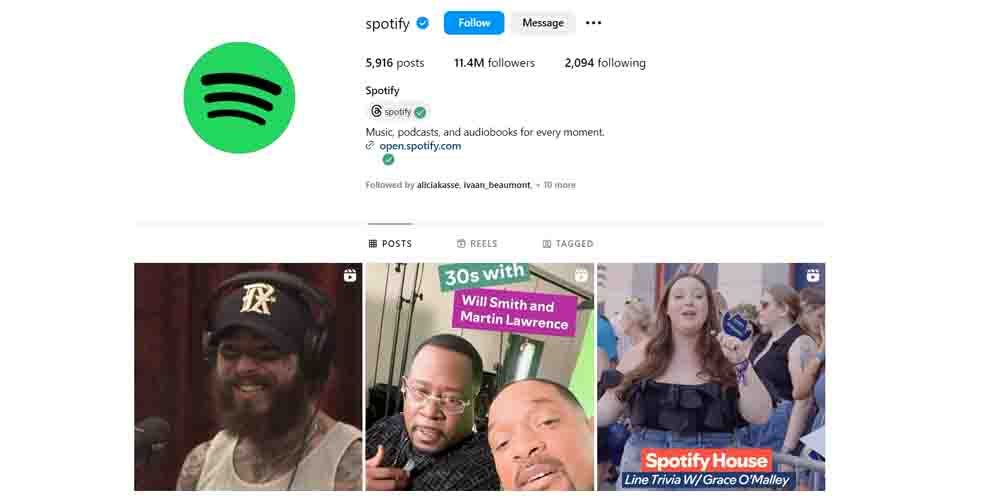
Spotify continuously posts short videos and photos on Instagram to promote particular artists who are offering new content through the platform. The platform uses images with a strong aesthetic sense.
- Facebook: 23 million
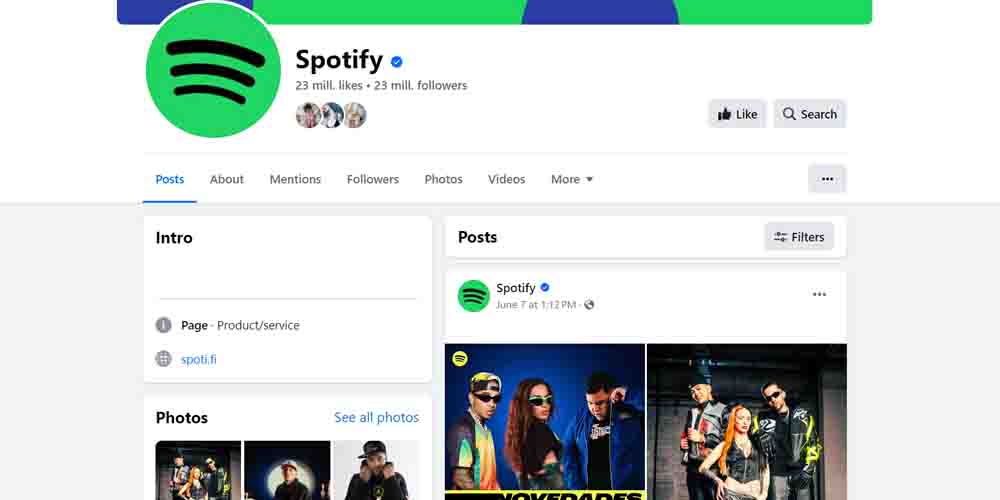
Spotify’s Facebook posts are similar to those on Instagram. This cultural phenomenon focuses on specific musicians from the region or country where the navigator lives and shows them the latest trends on the platform.
- Twitter: 14.2 million
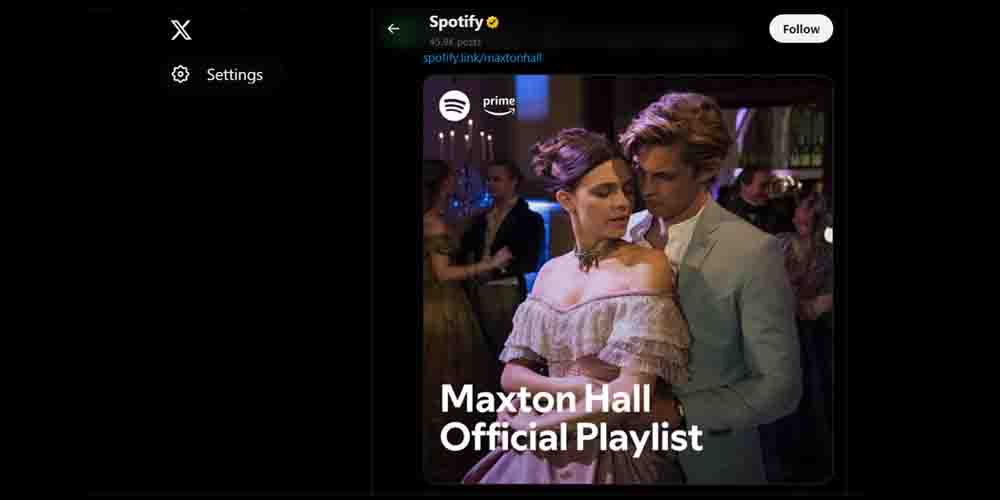
On Twitter, Spotify offers a look at the latest albums and songs from well-known artists by providing a URL that leads directly to the song or album. Additionally, the conversations that take place in the posts help users discover what other listeners think of artists by sharing their musical tastes.
- LinkedIn: 4 million
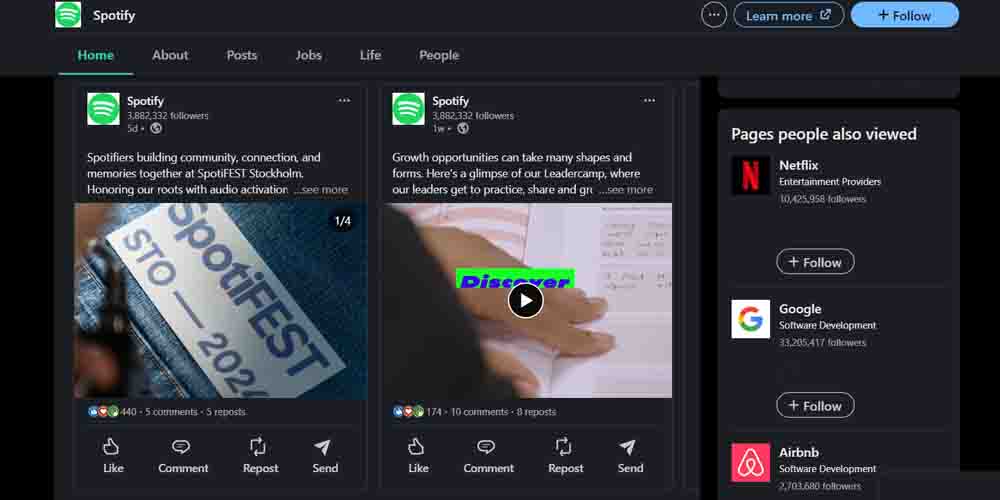
Spotify uses LinkedIn to promote a broader range of company-related situations, such as people who work in the business and special events where everyday people participate. Through these posts, Spotify motivates brand loyalty and encourages people to share their feelings with the company.
- YouTube: 1.72 million
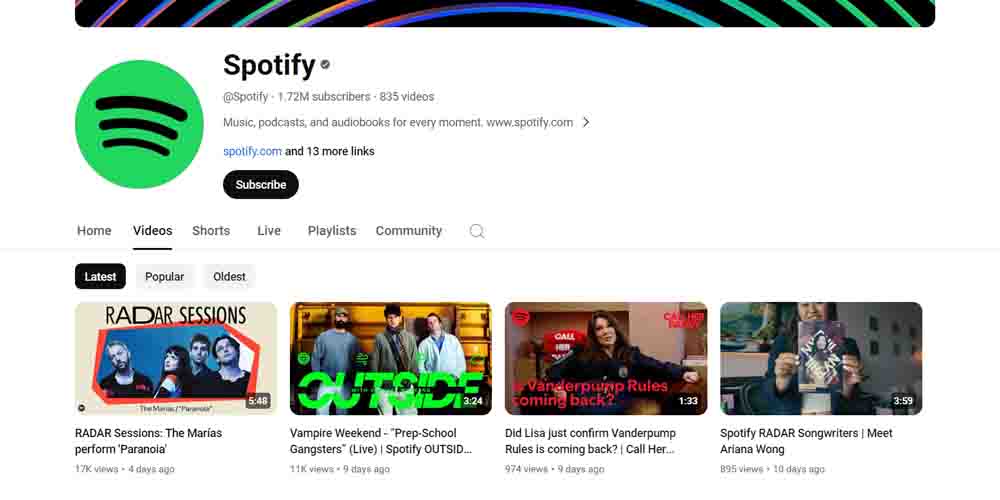
As expected, Spotify mainly uses its account on YouTube to publish videos and shorts of the most popular artists of the moment. Spotify also posts excerpts of podcasts, radio streamings, and videos from other platforms to enrich its programming and reach.
- Reddit: 1.8 million
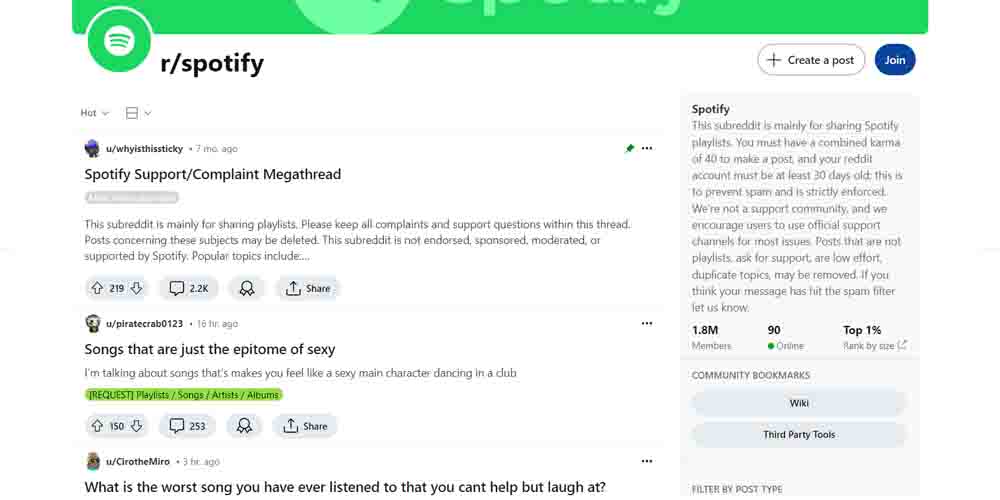
Spotify periodically posts on Reddit to promote debate among followers about the platform’s most-played songs and other common topics, such as each participant’s particular tastes. Discussions you find here are really funny and can give deep insight into what is happening in the world of music.
Affordable Prices for Premium and Free Subscription

Most businesses would likely tell you that converting potential customers into clients is a crucial aspect of any marketing strategy. The best method to achieve this is to balance good pricing with offering a complete product that satisfies customers.
Spotify users can access the platform via a free plan, making it easier and more accessible for most listeners, no matter their listening habits.
However, this free plan is an ad-supported subscription that offers access to many libraries and podcasts but with some restrictions. By offering this free plan, Spotify expands the number of new users who enter the platforms, who can later advance toward a premium subscription.
A paid subscription offers clients unlimited skips, offline listening, and an experience free of advertisements. Besides, Premium features are accessible at affordable prices.
Personalized marketing

Source: Backlinko.
Spotify has understood that the listening experience is more than selecting a few songs or audio with our favorite artists and reproducing them until infinity. Spotify knows that listening is a completely personalized experience that reflects the user’s cultural moments, heritage, and taste.
This way, Spotify allows listeners to build their own tailored playlists with old and new music and create the auditive space they desire. This marketing strategy has brought huge success, enticing thousands of customers who prefer a personalized listening experience.
But personalized playlists are not everything. Spotify also allows clients to personalize the platform’s stylistic and aesthetic aspects, creating unique reproducing spaces that truly reflect listeners’ hearts and souls. Undoubtedly, these customizable possibilities have increased user engagement.
Data-Driven Marketing
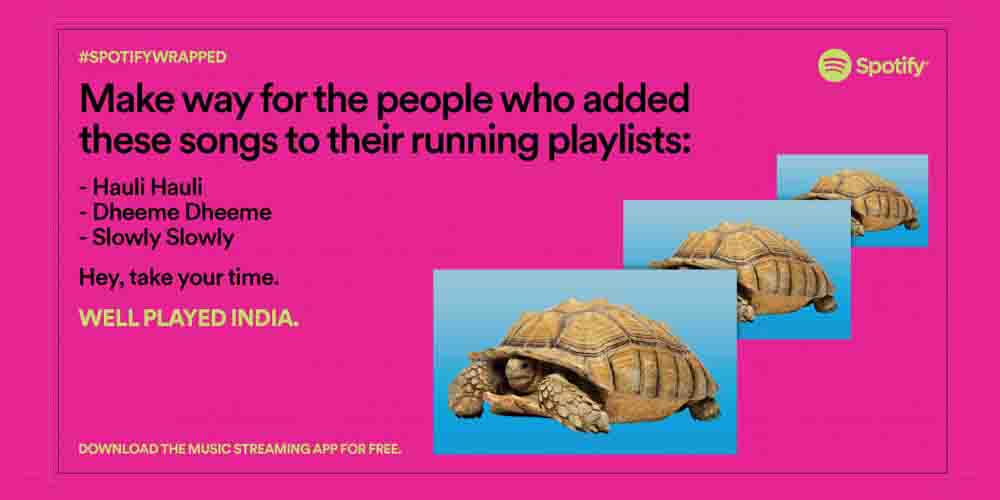
Spotify’s marketing strategies are strongly based on data that customers provide through their behavior and metrics. This method provides Spotify with a rich source of data for campaigns as data-driven insights are gained.
Through data-driven performance, Spotify creates targeted campaigns that respond to listeners’ unique behavior. Even new listeners can enjoy this experience by sharing their personal and friends’ music tastes.
Spotify also considers interaction with the platform, usage metrics, and friends and family’s preferences. This way, the platform creates a particular campaign for you and shows you relevant suggestions.
User Experience

Connected Spotify users know that UX, or user experience, is the cornerstone of every incredible platform experience since users enter Spotify to make their daily walk through a personal experience. Consequently, Spotify not only offers particular playlists and audio streaming for different moods but also interesting features that allow users to facilitate usage and connection with other users.
For example, the Time Capsule and Daily Mixes offer a personalized content experience regardless of the latest trends and aim to cater to personal tastes and music that are important to them.
Spotify uses machine learning to capture crucial data points about your browsing habits and behaviors, offering an excellent user experience.
Spotify Wrapped
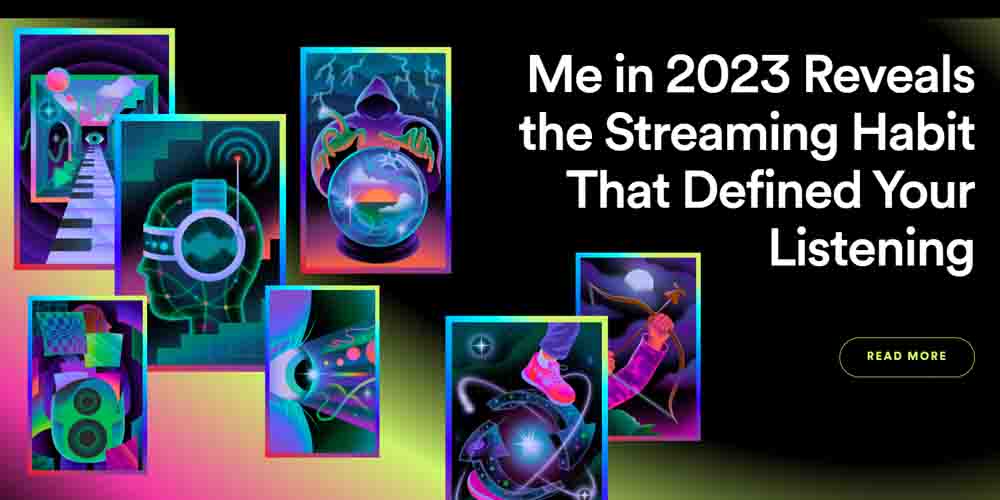
Spotify Wrapped is one of the most popular marketing strategies that Spotify has used since 2016. It allows users to see a compilation of their data during the last year and invites them to share it through social media. This customer data is important not only for Spotify but also for listeners who seek to connect with friends and other music lovers through sharing and social listening. Wrapped could be called a free marketing campaign through which Spotify has gained a lot of exposition.
Spotify Wrapped summarizes a user’s top five most-listened-to artists, favorite songs, and musical genres. By showcasing users’ activity on social media, Wrapped not only celebrates individual music tastes but also serves as an excellent promotional tool, turning users into brand advocates as they share their Wrapped results.
Creative Images, Visuals, and a Minimalistic App Interface

Spotify pays special attention to aesthetics and visuals, creating a distinctive platform and native advertising that stands out by its colors, font, effects, and more. It is especially noticeable in the funny billboards you can see in the main cities of the world, such as London and New York.
Spotify makes a good mix of data-driven data, personalization, word-of-mouth strategies, and other insights to create eye-catching advertising posts for streets and important buildings. This user-focused design played a crucial role in the first years of Spotify to attack new users, especially young ones and Gen Z.
Uses the Big Data
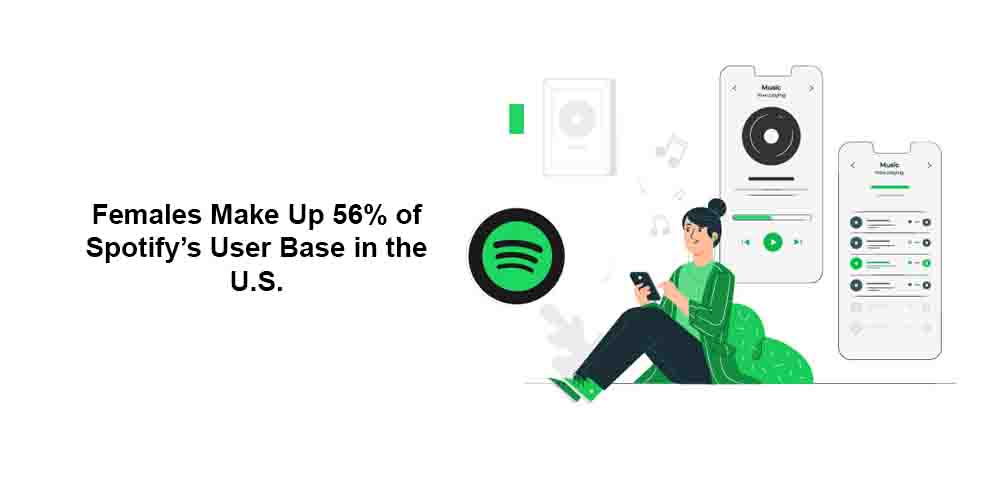
Source: thesocialshepherd.
Spotify ensures personalized playlists and an engaging customer experience due to the insights it gets from Big Data. The data it collects goes beyond just simply listening behavior and users’ favorite artists and top songs. It also studies the purchase behavior of customers, demographics, and other data to offer even more personalized advertising and get closer to customers.
In other words, it takes a deep dive into users’ preferences and practices regarding the use of social media listening tools to gather data and support them through the user experience journey. Consequently, every playlist and music adds that the customer experience is the result of all the information collected.
Uses User-Generated Content

Source: upqode.
Spotify knows that letting users tell their personal stories through music, posts, playlists, activity, and other media is the best way to engage them and keep them interested in the brand. In this sense, Spotify knows that the best brands are not only about the company and their desire to get money; they are almost completely about creating a community and putting users in the center of the maelstrom.
Besides, Spotify allows novices and established artists to create their music and promote it on the applications, covering a wide range of possible markets. In other words, listeners and brands create most of the material that Spotify uses to promote the app.
It Works with Influencers and Creators
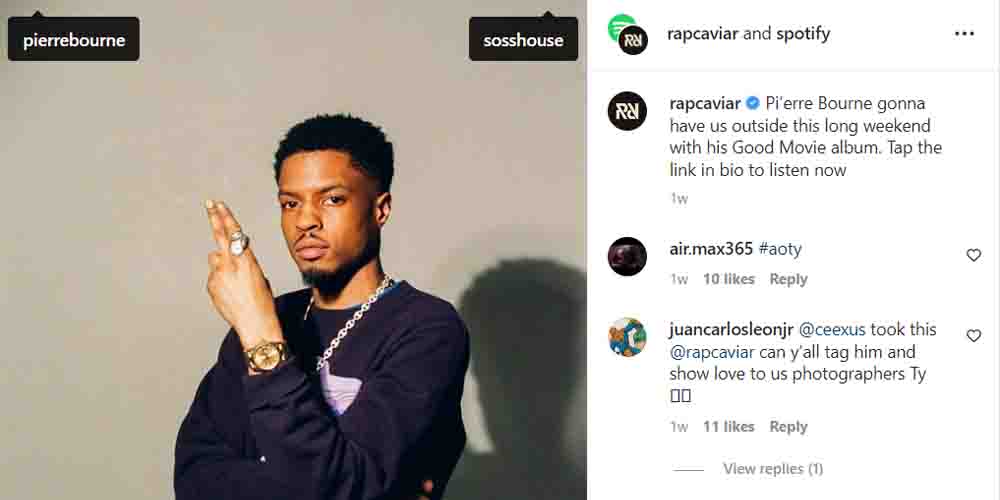
Source: Radarr.
Spotify’s social media campaign focuses on creating genuine connections with its audience. According to the brand, the best way to achieve this is by using influencer endorsements. And this is right since users engage with the product and new releases that famous musicians, top artists, YouTubers, influencers, and similar people promote.
A famous influencer collaboration is that between Spotify and Ari Elkins, a music curator living in NY. Elkins invited his 2 million followers to his Spotify playlists, which led to getting thousands of likes in a few hours.
Hashtags have also been interesting and effective marketing strategies since they present a platform users can engage and connect with. Hashtags help users connect and feel part of a community around a common topic.
A very effective hashtag was #2022wrapped. That year, it became a global sensation as users utilized it to share their annual Spotify data, making them feel connected to a worldwide community.
It Uses the Latest Online Trends and Hashtags
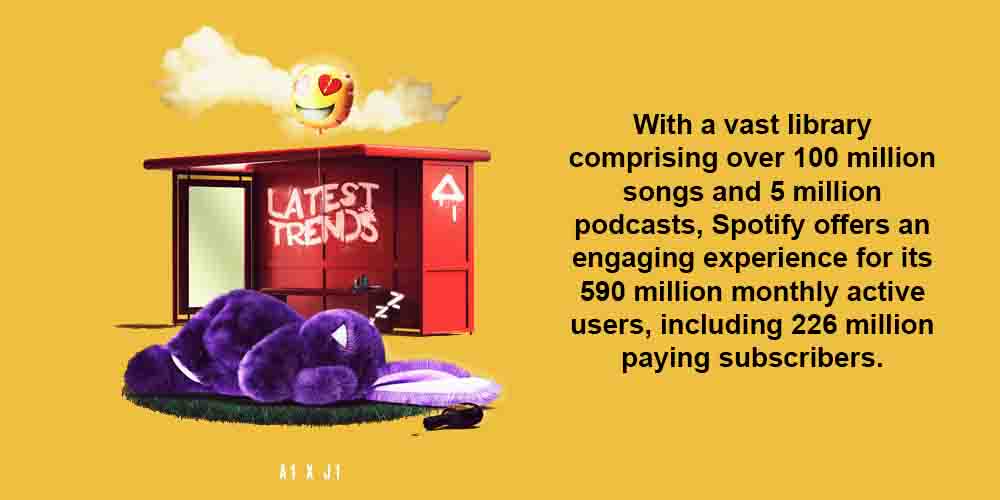
Source: Ideausher.
The world of music is constantly evolving with new releases, news, trending topics, and emerging artists every day. People want to stay updated on these trends to feel connected and share the latest with their friends and acquaintances.
Since Spotify knows that one of the best ways to engage with users is by sharing trending topics, music streaming, and the latest trends rocking the music world, it pays special attention to promoting new music that has reached the top of the rankings.
Spotify Uses Traditional Advertising Channels
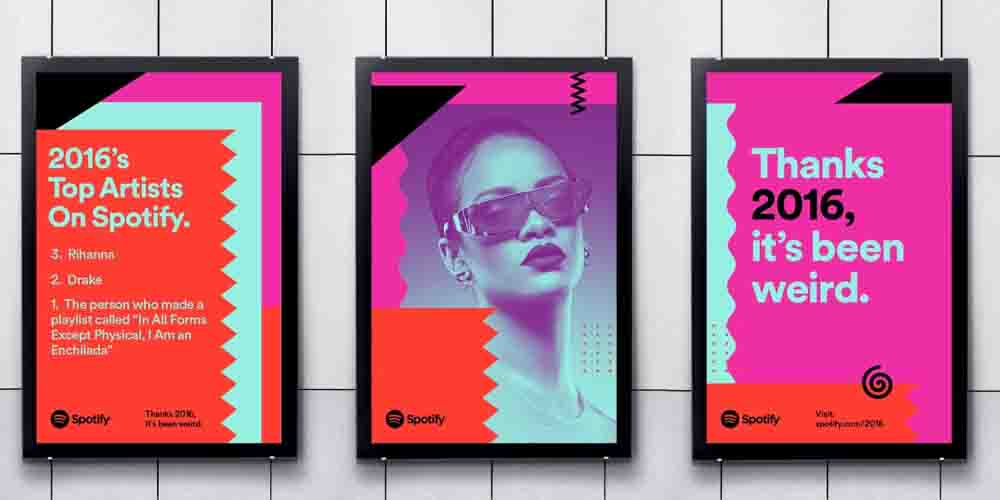
Spotify stands out over other online-based platforms and audio-streaming apps because it still trusts traditional advertising methods, such as radio, TV, and print. Through these different media, Spotify can reach a wider target audience, not only young people, who use more applications to listen to music and watch videos.
For instance, the most recognizable Spotify advertisements are billboards in public spaces in cities around the world. This type of advertising aims to attract new subscribers who are reluctant to use this type of platform to listen to music or current clients who need a second push to continue using the platform.
Spotify Ads
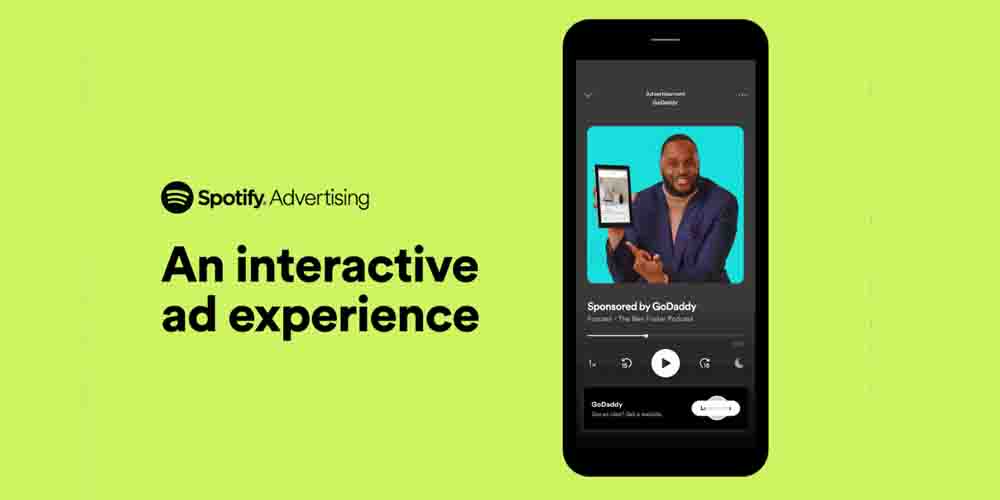
Big companies, whether related to the world of music or not, use Spotify to promote their brands and products. Of course, artists also rely on this platform to promote their art. The most common types of Spotify ads are:
- Digital advertising.
- Video and audio ads.
- Video ads appear when a user is browsing through the Spotify catalog. This way, your brand gains direct viewability.
- Podcast ads are a good way to reach listeners when they are immersed emotionally in a relevant topic. When using podcast ads, it is important to use the same voice tone.
- Sponsored ads start after 30 minutes of ad-free music listening sessions. These ads deliver your message in a sound-on environment.
- Video and audio ads.
The Bottom Line
Spotify undoubtedly has a lot to teach us regarding marketing strategies that rock the market and make noise enough to keep millions of users interested in the app. Of course, Spotify also offers impeccable services that surpass borders and focus on an amazing user experience that stands out due to its level of personalization.
Following the steps of Spotify can help you to find the right path to a successful marketing campaign. For an overview glimpse of this question, contact us through our contact form to discuss the main aspects of an accurate digital advertising campaign that competes with Spotify.
FAQ
How did Spotify Outperform Apple Music, YouTube Music, Amazon Music, and other Competitors?
Spotify has used several advertising strategies, online and offline, over time to entice and engage customers, especially Gen Z and Millenials. Spotify deploys ads in public places and allows users to post user-generated content through the Internet.
What Are Examples of Spotify Marketing Strategies?
Spotify has adopted a closer approach to users by offering a personalized experience based on the music they listen to and even the mood they reflect, according to the artists they prefer. Additionally, Spotify allows users to personalize the user interface and share content with friends through social media.

Maciej is a content manager with five years of professional experience. While his heart beats for viral marketing campaigns and creative storytelling, he’s equally at home delving into data to craft compelling content. Off the clock, you’ll find him immersed in old-school RPGs or doing various sports activities

